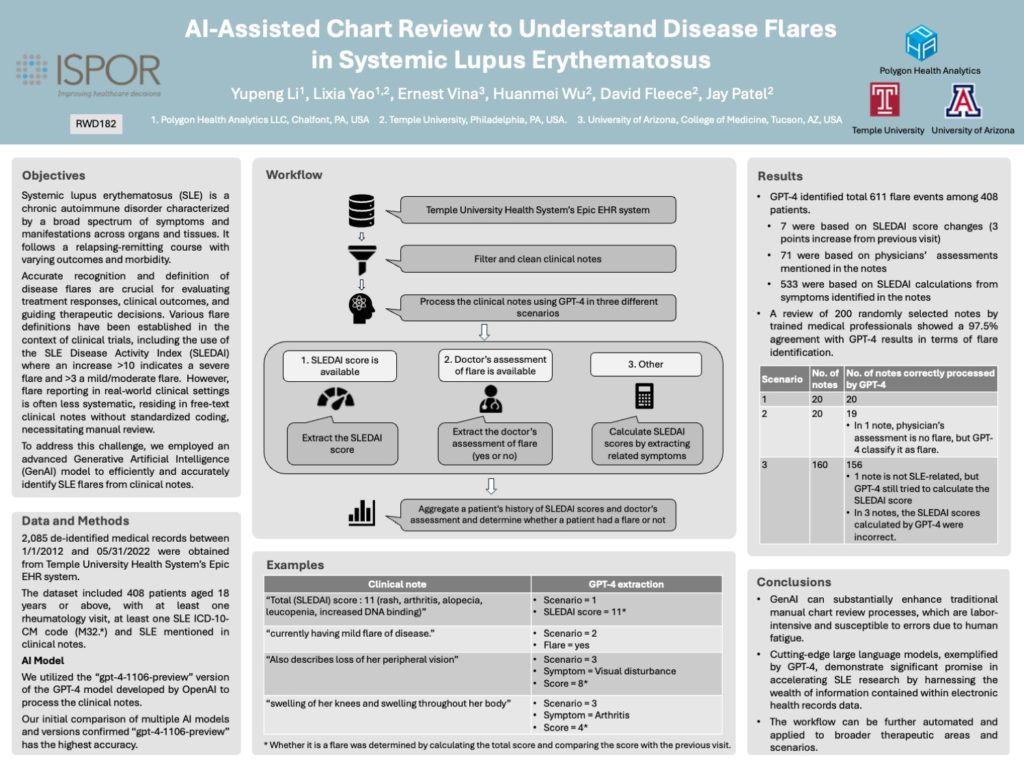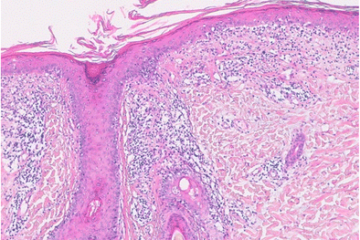Polygon Health Analytics is proud to announce the development of a groundbreaking capability – a Large Language Model (LLM)-facilitated chart review solution. This application of advanced AI technology has demonstrated its potential to significantly enhance the efficiency of chart reviews, while maintaining a high degree of accuracy in identifying and characterizing Systemic Lupus Erythematosus (SLE) flares. This holds true even in instances where flare diagnoses may have been missed. Our innovative work has been recognized as a Top 5% Finalist for the ISPOR 2024 Research Presentation Awards.
LLMs, which operate tirelessly around the clock, hold the promising tool for future clinical research. Our Founder and CEO, Dr. Lixia Yao, will be presenting this project, a result of our collaboration with Temple University, at the ISPOR Annual Conference in Atlanta, GA. The presentation is scheduled from 9:00 to 11:30 AM on Wednesday, May 8.
For any further inquiries or feedback, please contact us at info@polygonhealthanalytics.com. We look forward to meeting you at Atlanta.

Abstract
OBJECTIVES
Systemic lupus erythematosus (SLE) is a chronic autoimmune disease affecting multiple organs and systems. Accurately determining the frequency and pattern of disease flares, as measured by SLE Disease Activity Index (SLEDAI), is crucial for SLE care and research. However, flare reports often reside in free-text clinical notes, lacking standardized coding and necessitating manual review. To overcome this, we utilized an advanced AI model to identify SLE flares from clinical notes.
METHODS
We obtained de-identified medical records between 1/1/2012 and 05/31/2022 from Temple University Health System’s Epic electronic health record system. The dataset included patients aged 18 years or above, with at least one rheumatology visit, one ICD-10-CM code of M32.*, and SLE mentioned in a clinical note. We developed a multi-step automated pipeline using GPT-4 and prompt engineering to accurately identify flares based on (1) SLEDAI score changes (A >3 change in SLEDAI mentioned in the physician notes is considered a mild-moderate flare while a >10 change in SLEDA is considered a severe flare), (2) physician’s reports in the notes, or (3) our automated calculation of SLEDAI changes according to new symptoms and lab results documented in physician notes.
RESULTS
From 2,085 rheumatology notes of 408 unique patients, GPT-4 identified 606 flare events. Of these, 7 were based on SLEDAI score changes, 71 on physician’s reports, and 533 on our SLEDAI calculations. A review of 200 randomly selected notes by trained medical professionals showed a 97.5% agreement with GPT-4 results.
CONCLUSION
Our findings affirm that advanced AI technology can significantly enhance chart review efficiency while maintaining high accuracy in identifying and characterizing SLE flares, even in cases of missed flare diagnosis. Large language models, represented by GPT-4.0 show promise in accelerating SLE research using electronic health records data.



0 Comments